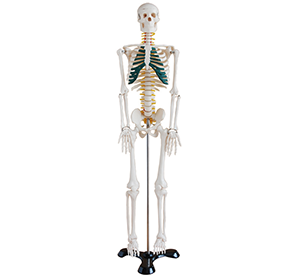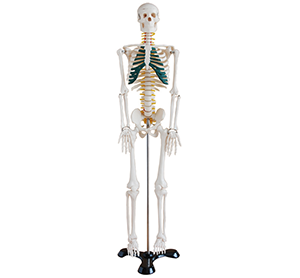In the vast field of medical education, the choice and application of teaching tools directly affect the quality of teaching and the learning effect of students. Among them, the human skeletal belt neural model with its unique advantages has become an indispensable assistant in medical teaching.
This model not only accurately reproduces the complex structure of the human bone, but also cleverly incorporates the fine layout of the nervous system. From the cervical vertebra to the tailbone, each piece of bone is carefully crafted to true proportions, demonstrating both the strength and support of the bone and its flexible movement. At the same time, the nervous system in the model shows the direction and distribution of nerve stem, nerve plexus and main branches with clear lines and marks, helping students intuitively understand the close connection between nerves and bones.

In the course of medical teaching, the neural model of the human skeletal band has played a great role. First, it provides students with a three-dimensional learning platform. Compared with the traditional two-dimensional teaching materials, the three-dimensional model allows students to more intuitively observe the shape and structure of bones and nerves and the spatial relationship between them, so as to deepen the understanding and memory of anatomical knowledge. Secondly, the operability of the model also brings convenience to teaching. Students can explore the mysteries of bones and nerves by touching, rotating, splitting, etc. This interactive learning method greatly improves students' interest and enthusiasm in learning.
In addition, it is widely used in clinical practice and scientific research. In clinical practice, doctors can use the model to carry out surgical planning, simulation operation or teaching, familiarize themselves with the surgical path, and predict possible anatomical variations or difficulties, so as to reduce surgical risks and improve the success rate of surgery.
To sum up, the human skeletal girdle neural model with its unique advantages plays an irreplaceable role in medical education, clinical practice and scientific research. It is not only a helpful assistant to medical teaching, but also an important tool to promote medical progress and improve public health. With the continuous development of medical technology, it is believed that this model will play a more extensive and far-reaching impact in the future.

